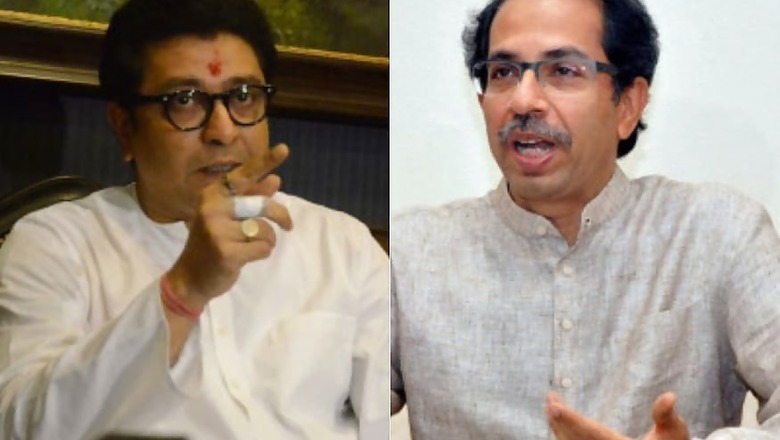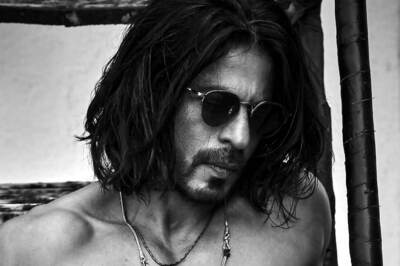
views
While the Shiv Sena has turned a new leaf to ally with the Congress and Nationalist Congress Party (NCP) to anoint party president Uddhav Thackeray as Maharashtra’s chief minister, rival Maharashtra Navnirman Sena (MNS) may also undergo a transformation.
On January 23, the birth anniversary of late Shiv Sena supremo Bal Thackeray, the MNS, which is led by his estranged nephew Raj, will hold the party’s first state convention in Mumbai. Raj pitches himself as his natural political heir.
MNS leaders say the party’s flag, which consists of saffron, green, blue, inter-spread with strips of white, will make way for one that is completely saffron. This flag may also have the seal of the 17th century warrior-king Chhatrapati Shivaji Maharaj.
Raj’s son Amit may also be launched as a party leader in this convention, which will also see resolutions on issues like the agrarian crisis, economy and political direction to be taken, being approved.
Amit is likely to be given charge of the MNS student wing. In 1988, Raj became president of the Shiv Sena’s Bharatiya Vidyarthi Sena (BVS) in his formal launch in politics.
However, for the party, the change in the “politically correct” flag, which was designed by Raj’s schoolmate Jay Kowli, an artist and secretary-general of the Boxing Federation of India, with its colours appealing to Hindus, Muslims and Buddhist Dalits, goes beyond symbolism. They state that the change may also see the MNS toe a political and social line inclined towards soft Hindutva.
Sources said Raj wanted to change the flag before the 2017 Brihanmumbai Municipal Corporation (BMC) elections, but held back. Now, this decision may have been prompted by the present politics of religious polarisation and majoritarian assertion.
The transition to soft Hindutva may pave the way for an alliance with the opposition Bharatiya Janata Party (BJP). The BJP, despite being the single-largest party in the Maharashtra legislative assembly, has been left licking its wounds after the Shiv Sena broke off to form an alliance with the Congress and NCP.
However, this is easier said than done. MNS functionaries admit an overt shift to Hindutva may alienate sections like the Marathi-speaking Muslims, especially those in tier-II cities and rural Maharashtra, and also Buddhist Dalits, who, being followers of Dr Babasaheb Ambedkar, resist political Hindutva.
The Shiv Sena’s adoption of aggressive Hindutva in the late 1980s paid electoral dividends in the short-term. But, it eventually prevented its expansion as a pan-Maharashtra regional and sub-national party like political formations in southern India.
Hence, MNS leaders say they may have to strike a balance between regional, Marathi identity and Hindutva, with “Maharashtra Dharma” (a term used by 17th century saint Ramdas denoting a strong sense of regional and religious identity) as a driving force.
The MNS, which was formed in 2006 after Raj quit the Shiv Sena in 2005 following a leadership tussle with cousin Uddhav, may use this as a political opening for an alliance or understanding with the BJP. Raj also met former chief minister and incumbent leader of opposition Devendra Fadnavis in Mumbai recently.
The elections to the Navi Mumbai and Kalyan-Dombivli civic bodies are due this year. Though it is not clear if the Shiv Sena will ally with the Congress and NCP, the MNS may use the opportunity to regain some lost space in the two extended suburbs of Mumbai, especially in Kalyan-Dombivli, by striking strategic understandings with the BJP.
Interestingly, the MNS had a strong base in Dombivli, which has a significant population of the Brahmin community, but saw this electoral cohort migrate to the BJP after the rise of Narendra Modi on the national stage. However, the party’s sole MLA, Raju Patil, has been elected from the Kalyan (rural) constituency.
So far, Raj has desisted from taking any overt anti-Muslim stance. In 2012, when a Muslim mob ran riot at the Azad Maidan in Mumbai, indulging in large-scale vandalism after a public meeting against violence in Bangladesh and Myanmar, the MNS had organised a protest march.
In the subsequent rally, Raj said this protest had no underpinnings of Hindutva, blamed those from outside states like Uttar Pradesh and even Bangladesh for the violence and stressed his religion was “Maharashtra Dharma”.
The MNS has also been accused of being fostered by the Congress and NCP, which were then ruling Maharashtra, by cutting into the anti-incumbency vote. Later, Raj supported Modi, who was then the chief minister of Gujarat, as a prime ministerial nominee even before he was formally pitched for the post by his own party.
In the 2014 Lok Sabha elections, the MNS put up candidates against those from the BJP and Shiv Sena, while supporting Modi’s prime ministerial bid. Later, Raj began criticising Modi and the BJP on issues like the ambitious Mumbai- Ahmedabad bullet train and demonetisation.
In the 2019 Lok Sabha polls, the MNS tried unsuccessfully for a political adjustment with the Congress and NCP, and later did not put up its nominees. However, Raj launched a surrogate campaign for the Congress and NCP, complete with audio-visual tools, where he would fact-check claims by the Modi government and criticise the PM as well as BJP national president Amit Shah.
Now that the Congress and NCP have broken bread with the Shiv Sena, Raj may have to hunt for a new friend, with the BJP likely to be the choice. The BJP too will benefit with Raj, one of Maharashtra’s biggest crowd pullers, on its side.
However, this is easier said than done, as it may involve compromises for both parties. The BJP may also risk losing support of non-Maharashtrian communities.
For instance, speaking in Pune last month on the controversial Citizenship (Amendment) Act, Raj blamed union home minister Shah for using emotive issues to divert attention from the economic downturn.
Raj also questioned the Centre’s plans to grant citizenship to persecuted Hindus, Christians, Parsis and Buddhists from Pakistan, Bangladesh and Afghanistan, when India is struggling to manage its own population. The MNS chief also railed against economic migrants from other states into Maharashtra and said he did not see the controversy in a Hindu versus Muslim prism.
Another important question is, whether the BJP, which has seen its growth being inhibited by another pro-Hindutva party in Maharashtra (Shiv Sena), allow a third player to fracture this constituency further.
MNS functionaries admit they have a tough balancing act to perform to rescue the party from its second consecutive assembly election debacle.
They stress they may have to capture some of the floating Hindutva votes, and the space for Marathi politics that the Shiv Sena may have to vacate due to its ideologically disparate alliance with the Congress and NCP. The MNS is also looking at creating a fresh niche in sections that are not swayed by or at disillusioned at the four mainstream political formations.
Raj is likely to spell out the forthcoming strategy for the party on this issue at the conclave. Despite the charismatic authority of its supreme leader, the MNS has seen just one MLA being elected to the Maharashtra assembly in 2014 and 2019, a steep decline in its fortunes compared to the bench strength of 13 in 2009.
One reason for this is said to be the party’s inconsistency and brand of hit-and-run politics that has prevented it from taking issues to their logical end.
When the party was formed, Raj had stressed on the politics of development. However, when the move came a cropper in the 2007 BMC elections, the MNS turned towards a brand of aggressive ethnocentric, anti-migrant politics. This, coupled with hyperventilating media coverage, paid dividends in the 2009 assembly elections, as the MNS captured the angst of the Marathi manoos in Mumbai and surrounding areas, who felt let down by the Shiv Sena.
The Shiv Sena’s shift to Hindutva had seen it disregard or ignore the cultural, social and political assertion by other linguistic groups in a fast-changing city. The rise in Hindi-speaking migrants in the city’s informal sector was resented by the working class Maharashtrians, who had to compete with them with an economic disadvantage.
However, the MNS, which was unable to build a strong grassroots organisation like the Shiv Sena, develop a second-rung of leadership, and also go beyond politics of totemism, was unable to sustain its tempo.
In 2018, the Shiv Sena walked off with six of seven MNS corporators in the cash-rich Mumbai civic body.
If the MNS wants to arrest its electoral decline and grow in Mumbai, it needs to improve its performance in the 2022 BMC elections, for which this realignment in its political strategy is necessary. The control over the BMC, the richest municipal body in India with a budget that outmatches smaller states, has been crucial to the Shiv Sena’s “reward economy” that sustains its formidable party organisation.
MNS leaders say the final word on its political course will be spelt out by Raj on January 23. But one thing is obvious, Maharashtra’s politics is in for interesting times ahead.
(Dhaval Kulkarni is a journalist and author of the book ‘The Cousins Thackeray: Uddhav, Raj and the shadow of their Senas’, which is the first political biography of Uddhav and Raj Thackeray. Views are personal)

















Comments
0 comment